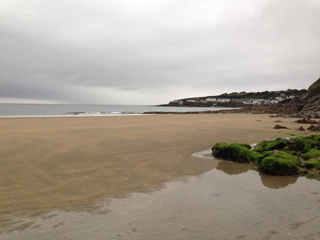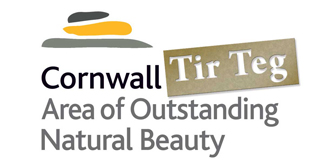 There is planned a photo opportunity at 11:15am on Wednesday 28th September 2016 on Porthcurnick beach near Portscatho. Members of the Cornwall AONB partnership will congregate around large letters that viewed from the cliff top spell out ‘AONB’ in the sand to celebrate their support of the partnership.
There is planned a photo opportunity at 11:15am on Wednesday 28th September 2016 on Porthcurnick beach near Portscatho. Members of the Cornwall AONB partnership will congregate around large letters that viewed from the cliff top spell out ‘AONB’ in the sand to celebrate their support of the partnership.
Twenty-one powerhouses well known for protecting Cornwall’s landscape and heritage are meeting on the Roseland today for the release of the Cornwall Area of Outstanding Natural Beauty’s 2016 -2021 Management Plan.
Colette Beckham, AONB Partnerships Manager tells Roseland Online, “The AONB is one of the county’s most prized assets and we should continue to protect and enhance it for both our visitors and residents but more importantly right now for the flora and fauna that we all depend on and the important archaeological sites that make Cornwall so special. This Management Plan strives to do just that”.
Led by the Cornwall AONB Unit, this partnership has spent the past year examining the opportunities and threats facing the county’s finest landscapes. As a result they have proposed a series of measures within the Management Plan that will seek to both protect and enhance the designated AONB over the next 5 years.
 Sometimes overshadowed by National Parks, Areas of Outstanding Natural Beauty (AONB’s) are in fact equivalent to National Parks in terms of their landscape quality, scenic beauty and their planning status. Nearly a third of Cornwall is designated as an Area of Outstanding Natural Beauty. The Cornwall AONB consists of 12 separate diverse geographical areas ranging from high, bleak moorland and wild rugged cliffs, to sheltered coves and quiet country lanes bounded by beautiful Cornish hedges.
Sometimes overshadowed by National Parks, Areas of Outstanding Natural Beauty (AONB’s) are in fact equivalent to National Parks in terms of their landscape quality, scenic beauty and their planning status. Nearly a third of Cornwall is designated as an Area of Outstanding Natural Beauty. The Cornwall AONB consists of 12 separate diverse geographical areas ranging from high, bleak moorland and wild rugged cliffs, to sheltered coves and quiet country lanes bounded by beautiful Cornish hedges.
But cracks are emerging across our most celebrated landscape that need attention, in particular a loss of cultural heritage as many of our scheduled ancient monuments fall into ruin, the over intensification of our agriculture that threatens our pollinators and the daily arrival of plastics onto the shores of our beaches, which is running at an epidemic level. But there also positives, in particular better integrated actions, projects and initiatives that promote sustainable management of the protected landscape, that encourage health and wellbeing and that can support vibrant coastal communities.

